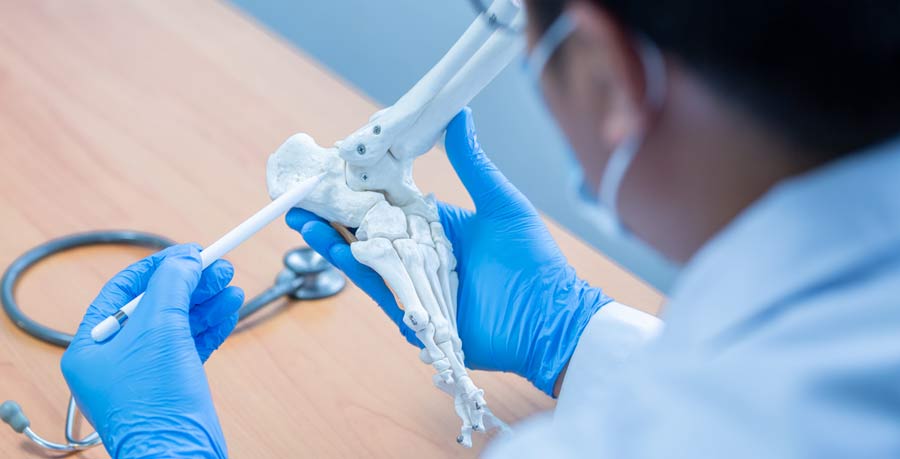
How to improve your joints
Improve joint health and keep them in good shape with some tweaks to your lifestyle. Diet, exercise, and the right tools can improve your joint health. By becoming proactive in improving your joint health today, you may add years on to your joints longevity and comfort.
What Are Joints?
A joint is a connection between two bones. Joints and their surrounding structures allow you to bend your elbows and knees, move your hips, bend your back, turn your head, and wave your fingers. Smooth tissue called cartilage and synovium, and a lubricant called synovial fluid cushion the joints so bones do not rub together. But aging, injury, or being overweight can wear away your cartilage, which can lead to damaged joints and arthritis. The best way to care for your joints is to keep them, your muscles, ligaments, and bones strong and stable. The following tips can help you guard your joints against injury and keep them healthy for years to come.
Maintain a Healthy Weight
Keeping your weight within a healthy range is the best thing you can do for your joints. Weight-bearing joints such as your knees, hips, and back support your body weight. That’s why so many overweight people have problems with these areas; those joints are under added pressure from carrying the extra weight.
Stay Active
Regular exercise helps your joints work as they should, eases stiffness, and relieves fatigue. It strengthens the muscles that support your joints. An extra perk: It cuts your odds of heart disease. Another important note: Couch potatoes, computer addicts, and people who sit in a chair all day have a high risk for joint pain. Less movement means more stiffness in your joints. So get up and get moving. Change positions frequently. Take frequent breaks at work. Stretch or go for a short walk. If you can’t leave the office, try taking phone calls while walking around. Be careful, though. Too much exercise, or the wrong type, can be bad for you if your joints are inflamed or damaged. Do things that put the least amount of impact on your joints. Try swimming, stationary cycling, and lightweight lifting. Your doctor or physical therapist can help design a program that’s right for you.
Build Muscles
Strong muscles support your joints. If you don’t have enough muscle, your joints take a pounding, especially your spine, hips, and knees. Weight-training exercises help build muscle and keep your muscles and surrounding ligaments strong. That way your joints don’t have to do all the work. A certified personal trainer can show you the best exercises for healthy joints and how to do them correctly.
Strengthen Your Core
Make sure your exercise routine includes activities that strengthen your core. That includes your glutes, back, abs, and obliques. Stronger abs and back muscles help you keep your balance and prevent falls that can damage your joints.
Stop Smoking
Reducing joint pain is just one more reason to quit. Recent studies have found that smokers are more likely to develop rheumatoid arthritis and other joint pains. So make it a point to quit or at least cut down on the amount you smoke.
Perfect Your Posture
Slouching is not good for your joints. Standing and sitting up straight protect your joints from your neck to your knees. Good posture also helps guard your hip joints and back muscles. Posture is also important when lifting and carrying. For example, if you use a backpack, be sure to put it over both shoulders instead of slinging it over one. Being lopsided puts more stress on your joints. When you lift, keep your back straight and your feet wide apart to protect your shoulder, hip, and knee joints. Always bend from your knees and hips, not your back. Try to use the biggest muscles in your body, like your legs and glutes, to prevent straining the smaller muscle groups.
Avoid Overusing Smaller Joints
Use your large, strong joints to spare smaller, fragile ones. Try these tips:
Use an over-the-shoulder bag instead of a clutch or handbag. Hold grocery bags in your arms or use the shoulder straps of green bags. Hold small items in your palms instead of your fingers. Use both hands or your shoulder to open heavy doors. Hold items with two hands instead of one.
Protect Your Body and Prevent Injuries
Make sure you always wear a helmet, knee pads, and elbow and wrist pads when taking part in high-risk activities, including work-related activities such as repetitive kneeling or squatting. Even if you think you’re a pro on a bicycle or Rollerblades, you should never go without safety gear. Hit the wrong bump in the road, and you could be headed for a lifetime of trouble. Serious injuries or several minor injuries can damage cartilage, leading to long-term joint problems. Elbow and wrist braces, or guards, also help reduce stress on your joints during activities.
Ice
Ice is a great drug-free pain reliever. It also helps relieve joint swelling. If you have a sore joint, apply ice wrapped in a towel or a cold pack to the painful area for no more than 20 minutes. Don’t have ice or a cold pack? Try wrapping a bag of frozen vegetables (peas work best!) in a light towel. Never apply ice directly to the skin.
Eat the Right Foods
Eating a healthy diet is good for your joints because it reduces inflammation and helps build strong bones and muscles. For your muscles, you need to get enough protein. Exactly how much depends on your age, sex, and how active you are. Good sources include lean meats, chicken, fish, seafood, beans, legumes, and nuts. You also need vitamin D and calcium to keep your bones and joints in good health. Many people don’t get enough of these nutrients. Both are important for strong bones and healthy joints and help prevent osteoporosis. Vitamin D helps your body absorb calcium from the foods you eat. Dairy products, many cereals, soy milk, and almond milk are fortified with vitamin D. You can ask your doctor about the proper amount of vitamin D you should have and ways you can get it. Most adults need 1,000-1,200 milligrams of calcium and 2000 international units of vitamin D each day. Try incorporating nutrient-rich foods like leafy greens, salmon, and sardines into your diet. Vitamin C: Oranges may also give your joints a healthy boost. Some studies suggest that vitamin C and other antioxidants can help keep your joints healthy. Omega-3 fatty acids. Studies show they can help reduce inflammation. Some good sources are fatty fish like salmon, herring, tuna, and sardines. You can also try fish oil supplements, but check with your doctor first.
Cut Out Foods That May Inflame Joints
Common foods that cause the most inflammation include sugar, dairy, wheat/gluten, alcohol, and fried foods. Remove these foods from your diet to cut down on swelling and inflammation.
Drink Plenty of Water
When you are dehydrated, you reduce the amount of fluid cushioning all your joints. Because joints are made up of synovial fluid, it is imperative that we drink plenty of water to keep these joints hydrated and mobile. By following these tips, you can keep your joints in top condition for a long healthy life!

